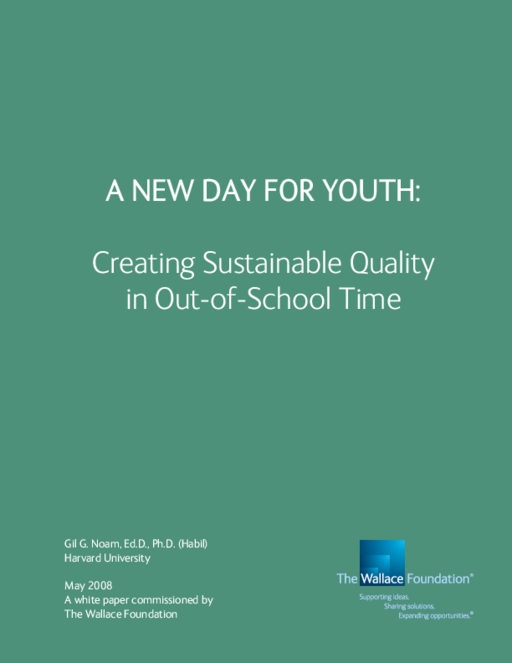Breadcrumb
- Wallace
- Reports
- A New Day For Youth Creating Sus...
A New Day for Youth
Creating Sustainable Quality in Out-of-School Time

Overview
More
Less
- Author(s)
- Gil G. Noam, Ed.D., Ph.D.
- Publisher(s)
- The Wallace Foundation
Summary
Gil G. Noam, an associate professor of psychology at Harvard Medical School at the time this paper was written, investigates what it takes for an afterschool program to be effective and high quality. He draws on his study of successful programs and cities where significant progress has been made in building strong afterschool programs and systems. He discusses the important role of intermediaries to help bring together elected officials, school districts, nonprofit organizations, and others to create quality afterschool experiences for children.
He also examines literature from fields of study, including out-of-school time (OST), education, psychology, and business research.
Out of this he defines a three-way approach to creating successful OST programs and systems, which he calls the "Quality Triangle." The best programs know to focus on all three sides of the triangle:
- Creating a cadre of stronger OST leaders
- Providing training and technical assistance for staff so they can create strong, caring relationships with children
- Offering support to help programs become more intentional in creating opportunities for young people to learn and grow

